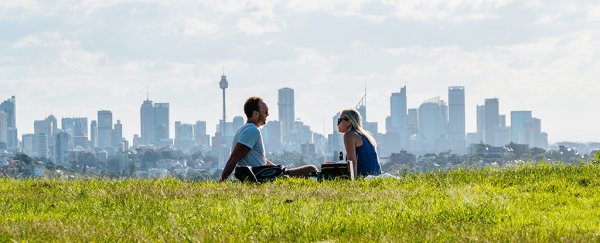Green areas give you more than just a place to stretch your legs – they can also affect your chances of suffering a stroke, according to a new study that linked having green spaces close by with a 16 percent reduction in stroke risk.
For the purposes of the research, the nearby green spaces were counted as those within 300 meters or a fifth of a mile from home. Data taken from the public healthcare system covering more than 3.5 million adults in the Catalonia region of Spain were collected across 2016 and 2017.
While data don't show that green spaces are the direct cause of stroke risk reduction, researchers note the association is strong enough to warrant further investigation – and to back up the idea that having more nature around is beneficial to our health.
"The study demonstrates the importance of environmental determinants in stroke risk," says neurologist Carla Avellaneda, from IMIM-Hospital del Mar in Barcelona, Spain.
"Given that it is predicted that the incidence, mortality and disability attributed to the disease will increase in the coming years, it is important to understand all the risk factors involved."
Greenery and natural spaces can boost health in a number of ways: they can reduce stress, they can give people places to exercise, and they can protect mental health. It seems there's also some effect on the likelihood of cerebrovascular problems.
There are many more factors to consider than nearby greenery of course. The team also looked at three atmospheric pollutants in the same study: nitrogen dioxide (NO2), particulate matter under 2.5 microns (PM2.5), and soot particles.
As has been found in previous studies, more exposure to these pollutants was linked to a greater risk of stroke. Previous studies have also found more exposure to these pollutants was linked with a slightly greater risk of stroke. In this recent analysis, for example, for every increase of 10 micrograms of NO2 per cubic meter, the risk goes up by 4 percent.
"It should be borne in mind that, unlike other air pollutants, which have various sources, NO2 is mainly caused by road traffic," says environmental epidemiologist Cathryn Tonne, a researcher at ISGlobal.
"Therefore, if we really want to reduce the multiple risks that this pollutant poses to people's health, we need to implement bold measures to reduce car use."
These links – between green space and stroke risk, and air pollutants and stroke risk – have been reported before, but few previous studies have looked at such a large sample size and gone into as much detail in looking at both nearby greenery and air quality.
Further research could look at exactly why more green space in an area seems to play into lowering the risk of stroke for people who live there. The researchers are also calling for revised regulations for the permitted levels of pollutants in towns and cities.
The associations between stroke risk, green space and pollutants remained even when controlling for socioeconomic factors, age and smoking habits – suggesting that we pay a price in terms of our health when we choose to live in urban areas.
"We must strive to achieve more sustainable towns and cities where living does not mean an increased risk of disease," says neurologist Jaume Roquer, also from IMIM-Hospital del Mar.
The research has been published in Environment International.
